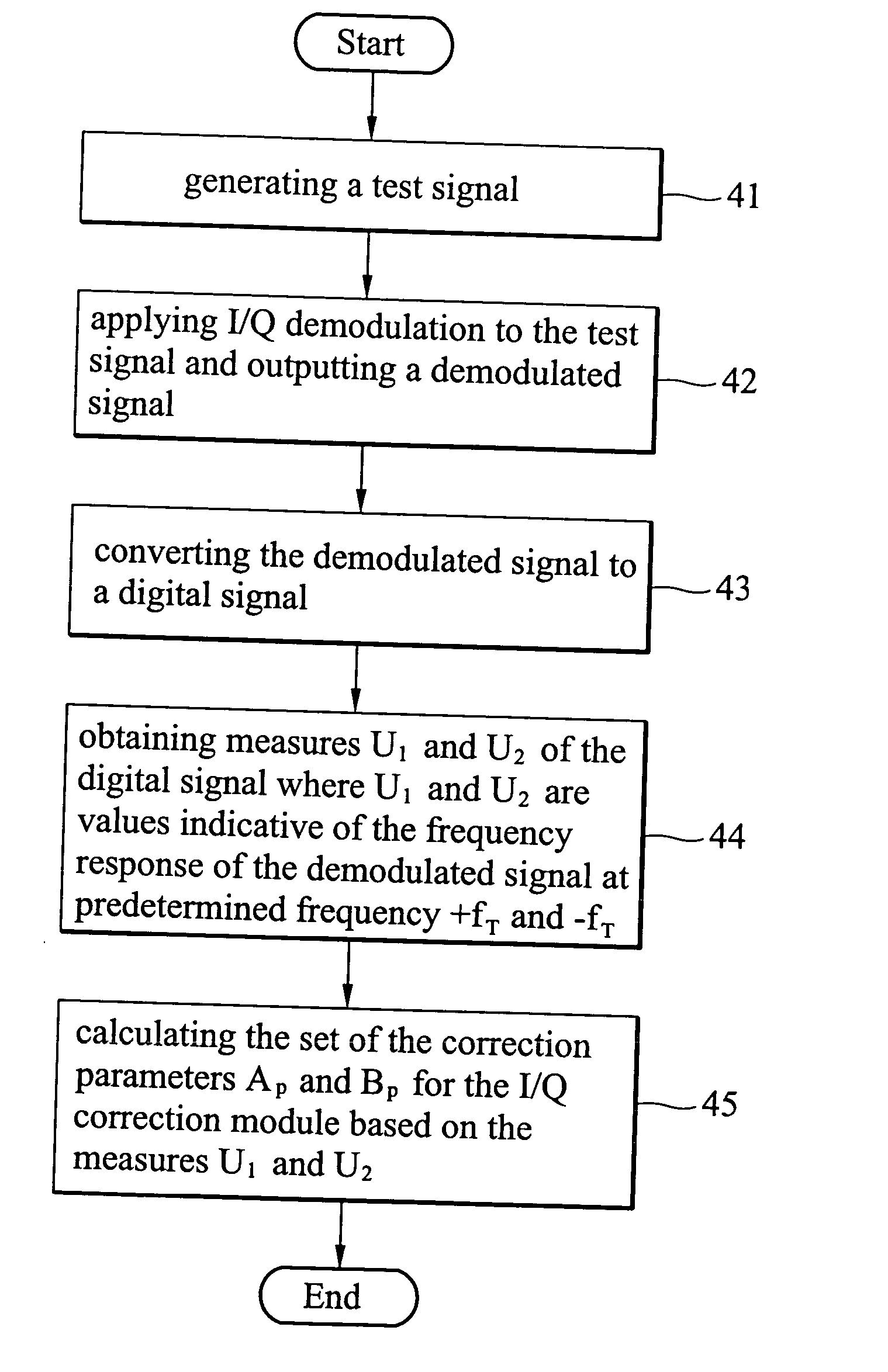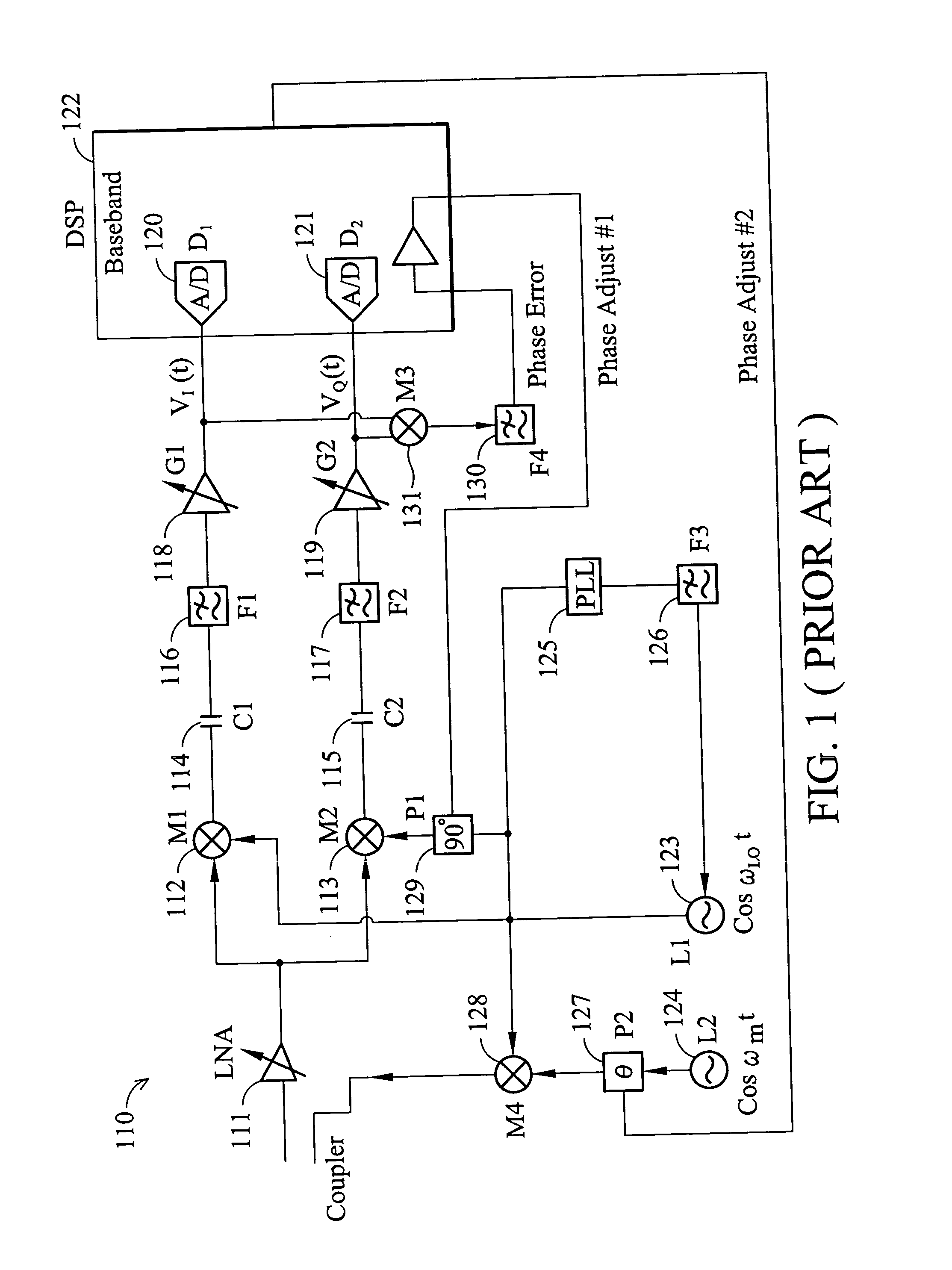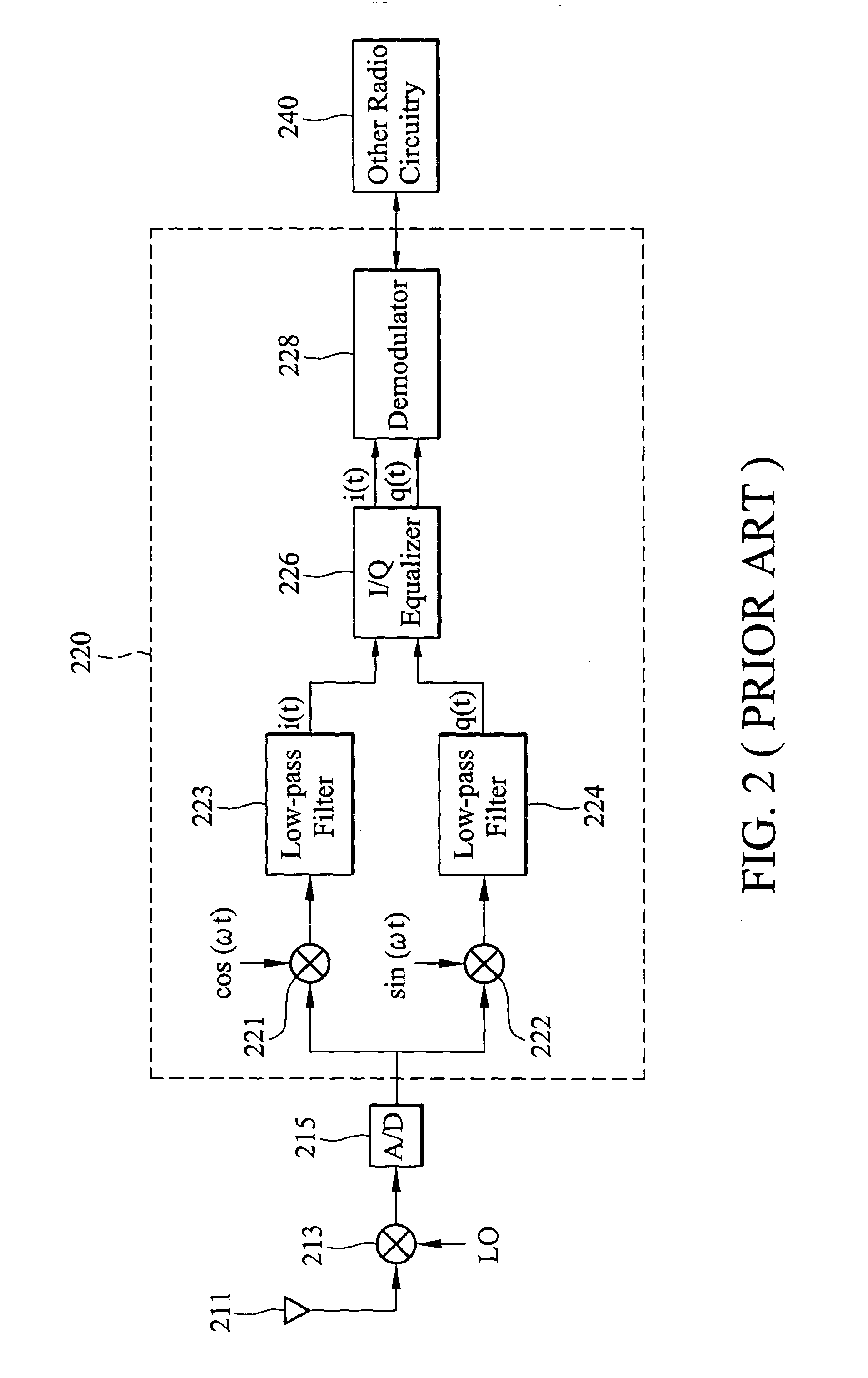Method and apparatus for I/Q mismatch calibration in a receiver
a receiver and mismatch technology, applied in the field of compensation, can solve the problems of not being able to analyze the effects of signal impairment, unable to achieve the effect of reducing the central frequency of the test signal, and most of the impairments can occur in either the transmitter or the receiver
- Summary
- Abstract
- Description
- Claims
- Application Information
AI Technical Summary
Benefits of technology
Problems solved by technology
Method used
Image
Examples
Embodiment Construction
The mathematical theories of the invention will be described in the following.
The equivalent baseband signals for the I and Q channels before the I / Q demodulation are represented as xI(t) and xQ(t) respectively. Ideally, the signal before the I / Q demodulation can be expressed as r(t)=xI(t)·cos(2π fct)-xQ(t)·sin(2π fct)=Re{x(t)·ⅇj2π fct}(7)
where x(t)=XI(t)+jxQ(t) and fc denotes the carrier frequency. Assuming that an amplitude mismatch a and a phase mismatch θ results from the I / Q demodulation, the baseband signals y1(t) and yQ(t) for the I and Q channels after the I / Q demodulation are, without loss of generality, given by the equations:
y1(t)=x1(t) (1+α)·cos(θ / 2)+xQ(t)·(1+α)sin(θ / 2) (8)
yQ(t)=x1(t)·(1−α)·sin(θ / 2)+xQ(t)·(1−α)·cos(θ / 2).
The combined baseband signal y(t) after the I / Q demodulation can be expressed as yI(t)+jyQ(t). Thus, from the equation (8), the following equation can be derived:
y(t)=A·x(t)+B·x*(t) (9)
where A and B are complex numbers with...
PUM
 Login to View More
Login to View More Abstract
Description
Claims
Application Information
 Login to View More
Login to View More - R&D
- Intellectual Property
- Life Sciences
- Materials
- Tech Scout
- Unparalleled Data Quality
- Higher Quality Content
- 60% Fewer Hallucinations
Browse by: Latest US Patents, China's latest patents, Technical Efficacy Thesaurus, Application Domain, Technology Topic, Popular Technical Reports.
© 2025 PatSnap. All rights reserved.Legal|Privacy policy|Modern Slavery Act Transparency Statement|Sitemap|About US| Contact US: help@patsnap.com



